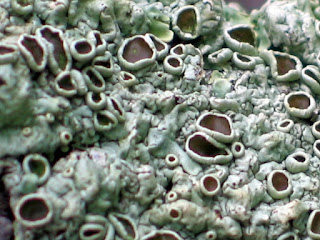
Today I struck out in a new direction, wandering in the woods for hours with some fire/plant experts from Natchez Trace. The goal was to study fire effects in the area. Sounds kind of odd as we all know the effects of fire -- things get burned. In this case, forests get burned, pretty much to the ground if things get out of control, though hopefully, it's just the brushy underlayer 'fuel' that is scorched.
Not many people realize that the National Park Service uses fire to maintain habitat that was historically fire maintained through lighting strikes and other sources. Generations have been raised listening to Smokey Bears urgent appeal "Only you can prevent forest fires." Yogi and BooBoo bear cemented the idea in my head -- forest fires are burned and rangers are there to stop them. That is not at all the case as our understanding of local ecosystems evolves and we realize what a disservice it's been to curtail natural wildfires for so long.
Here in the Florida Panhandle, wildfire is a serious threat many days of the year when the humidity drops, the soil is parched and plants are just tinder waiting for a cigarette butt or a passing storm to ignite a blaze. Rather than wait for such an uncontrollable event, land managers plan prescribed burns to keep the fuel load low and maintain healthy forests. With limits on the acreage that can be burned each year and literally tons of fallen trees from Hurricanes Ivan and Dennis, the park here has lots of areas that need to be burned.
I never spend much time in the forest, and when I am there, I'm searching the ground for gopher tortoise burrows. Walking around looking at trees, lichen, fungus, shrubs and leaf litter was kind of interesting. I love days when I get to learn.
Now, I just need to find a good idea book for all of these new species -- even the lizard is new to me!
I'm not a fire fighter, and don't have a red card. Maybe I'll go for training this year, but that's up to my boss. Since my new 'hurricane' money will expire in November, I doubt he'll want to invest the time and money, but we'll see. 
What we did today was examine two plots that were burned a year ago. It was the second burn for both plots, so the hope was that this would return them to a 'normal' forest habitat for this region -- rather scrubby sand and long leaf pines, live and turkey oaks with understories of magnolia, saw palmetto, various berries and a few other shrubby trees. I don't know enough to say if that's what has happened in these two plots, though I did learn a lot about making the assessments necessary to determine that.
We spent most of the day setting up transects, walking different lines to determine the amount of herbaceous species in one section, shrubs in another, all the trees in the overstory and trees over 2.5cm dbh in two of the four plot quarters. It was dusty, ashy work, and you could still smell the burnt pine from a fire last winter, but it was pretty fun. By late afternoon, all the trees and shrubs started to look alike though -- my weary turtle brain needed a bit of a break, but we have all next week to work on this too. I should be pretty good with the local forest plants by then -- all I need now is someone to teach me the beach plants here. Any takers?
10 January 2008
Fire Effects
Posted by
Turtle Girl
at
4:51 PM
![]()
![]()
Labels: fire effects, fire effects monitoring, Gulf of Mexico, sea turtle, turtle, turtle girl
Subscribe to:
Post Comments (Atom)
International Coastal Clean-Up!
The 2008 Coastal Clean-Up on Santa Rosa Island was a great success, but we can work together to make everyday a Coastal Clean-up Day... Help us keep our beaches beautiful!
For details on the 2009 coastal clean-up efforts in Pensacola or in your area, or other ways you can help, click here.
For details on the 2009 coastal clean-up efforts in Pensacola or in your area, or other ways you can help, click here.
Hello World!

Which way to the sea?









No comments:
Post a Comment